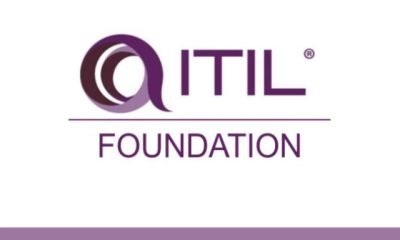Education
6 Most Common Mistakes in Essay Writing


When students write their essays, they face a lot of complications. They have to meet their deadlines, be aware of grammar, the flow of the text, research the questions, and so on. These demands inevitably lead to certain mistakes. At times, students don’t even know they make them. It leads to a loss of vital grades.
To avoid that loss, inventive teenagers use the help of custom writing services. A reliable and professional writer service can resolve merely all your academic hardships. You only need to research the case and define which pro service suits you the best. In the meanwhile, we would like to pay your attention to the most common mistakes made by students in essay writing. We believe that if you know what’s wrong, you will surely avoid it.
Too Many Repetitions
We begin our rating of the 6 most common essay writing mistakes with repetitions. Students tend to repeat themselves in two ways:
- They use the same words all the time long.
- They restate their theses all the time long.
Let’s discuss these two errors. You are supposed to be original and creative. It means you have to use a vivid lexicon and do not repeat the same words or phrases too much.
When you restate the same points, in other words, you also make a mistake. It even seems to be childish because you cannot dwell upon other arguments. A reader will quickly understand that you didn’t manage to disclose the topic properly. Therefore, use various theses.
A Lot of Passive Constructions
You should keep an eye on the number of passive entries in your text. At times, the passive voice is very beneficial for essays and especially for research papers, lab reports, etc. It makes every sentence more uncommon and interesting. Nevertheless, misuse of the passive voice makes the text hard to read, and it seems to be less dynamic. Let’s compare the active and passive voices:
● Passive: The book was read by me.
● Active: I read the book.
The active construction requires fewer words and is more dynamic. Active voice adds dynamism to the flow of your text. Therefore, reduce the number of passive entries.
Unreadable Sentences
Oftentimes, students write sentences that make no sense or that offer too complicated explanations. Such sentences appear when students try to be overly academic and scientific. They use too many technical terms, abbreviations, and many unknown words.
You should be straight to the point and operate with common words. To make your text readable, follow these tips:
● Don’t misuse technical terms;
● Avoid abbreviations and acronyms;
● Stick to the active voice;
● Explain all possibly unknown words.
Even when an intelligent student writes a term paper or dissertation, his/her content should be easy to understand. All the unknown phenomena should be explained in plain words.
Too Long or Short Sentences
One of the most widely spread mistakes in essay writing is the length of sentences. A good writer always knows how long the sentence should be. It depends on the paper type and topic. However, it cannot be too long or too short.
When you write long sentences you complicate the understanding of what you mean. Before the reader reads to the end, he/she may forget the beginning (especially when you discuss complicated issues). Mind that too long paragraphs are also hard to read and comprehend. Break them into smaller chunks.
Too short sentences look actually childish because you write an academic project. You cannot write something like this:
● It was great.
● That’s true!
● You can believe it, etc.
Perhaps such sentences will be suitable when you write a blog and you may choose whatever constructions and words are necessary. However, these short sentences never suit academic papers. Your sentences should be at least 5 words long and not more than 10-13 words. Besides, long sentences should appear rarely! Remember this rule for good!
The Wrong Word Choice
The issue of choosing the lexicon is crucial for every piece of writing. You ought to choose the words, which fully suit the chosen topic and discipline. You cannot use medical terms when you write about literature.
Many students like to use everyday words. They are non-scientific and are rarely used in literature. For example, they tend to use such words as gonna, wanna, gotta, etc. They do not suit academic writing! Avoid the following elements of the lexicon:
● Slang;
● Jargon;
● Clichés;
● Abbreviations;
● Acronyms;
● Technical terms, etc.
Too Many Coordinating Conjunctions in the Beginning
We will end our top-6 common mistakes related to coordinating conjunctions. Nobody forbids using them, but you should not overuse them! They commonly appear at the beginning of a sentence. Be aware of the following examples:
● Therefore;
● However;
● Nonetheless;
● Nevertheless;
● Notwithstanding, etc.
Consider Professional Help
In case you feel you cannot define all the mistakes, and they reappear in your essay, turn for help to professionals. You will find various writing platforms on the web. Attentively check their certificates and reputation. Match your list of expectations with their benefits and choose the most suitable website.
A reliable online writing service has hundreds of professional writers. You are free to choose anyone who is able to satisfy your academic needs. You will enjoy:
● High quality;
● Unique content;
● All kinds of academic skills;
● On-time deliveries;
● Full privacy;
● Fair pricing;
● Discounts;
● Refunds;
● 24/7 support.
These benefits are pretty attractive, aren’t they? You will enjoy them all automatically as soon as you become a client of a custom writing agency. Simply make sure you have chosen a reliable platform to secure yourself.
Summing Up
We have highlighted 6 common mistakes in essay writing. Yet, there are many others that happen pretty often. It’s necessary to define and remember them all. Thus, you will make a huge step to avoid them in your academic projects.


Education
Revealing Your Musical Potential: How Structured Music Lessons Can Aid Novices


Discovering one’s musical capabilities begins with the first note, chord, or beat.
Music lessons for beginners is the journey into the realm of music, which can be both exhilarating and daunting. The secret to unveiling this potential resides in practice and structured lessons to build a strong foundation.
This article delves into how these lessons serve as a cornerstone for novices, enabling them to explore, understand, and refine their skills.
The Importance of a Solid Start
Embarking on this education requires more than just enthusiasm. A solid start, anchored in comprehensive music lessons for beginners, sets the tone for a learner’s journey. It ensures that fundamental concepts are not just introduced but understood and internalised.
This approach minimises confusion and builds a platform from which skills can be developed systematically.
Tailored Approach to Learning
Every individual possesses unique learning capabilities and musical inclinations. Structured lessons cater to these differences, offering tailored approaches that match the learner’s pace and interest.
This personalisation enhances engagement and ensures that each session contributes effectively to their progress. By addressing the learner directly, lessons become more than instruction; they become a dialogue between the student and the music.
Building Blocks of Musical Knowledge
At the core of music lessons for beginners lie fundamental concepts that are indispensable for all subsequent learning and mastery. These foundational elements encompass the comprehension of musical notation, the essence of rhythm, the scales’ structure, and the chords’ formation.
A firm grasp of these basics is pivotal for progressing to intricate compositions and diverse genres.
Furthermore, lessons meticulously crafted to systematically introduce and reinforce these concepts significantly contribute to cultivating a rich lexicon. They enable learners to interpret music more quickly and express themselves fluently through their chosen instrument.
This systematic approach ensures a well-rounded understanding, laying a solid groundwork for exploration and creativity in the journey.
The Role of Feedback and Correction
Structured lessons provide a platform for consistent and constructive feedback, allowing beginners to recognise their strengths and areas for improvement. This corrective mechanism is vital in avoiding the entrenchment of incorrect techniques, which can hinder progress.
The Joy of Early Achievements
Structured lessons aim to impart knowledge and recognise and celebrate every milestone achieved along the way, no matter how modest. Mastering a basic melody or composing a first piece are significant markers of progress, essential for boosting motivation.
These accomplishments are potent reminders to beginners of their strides, underscoring the tangible outcomes of their perseverance and hard work. Celebrating these successes is vital to maintaining enthusiasm and fostering a deep commitment to this art form. It instils confidence in learners, encouraging them to set and achieve new goals.
Beyond the Basics: Encouraging Exploration
Once beginners have a solid grasp of the fundamentals, these lessons evolve to encourage a journey beyond foundational skills. This new exploration phase invites learners to delve into various genres, fostering an appreciation for diversity.
Experimentation becomes key through composing original works, improvising within known pieces, or collaborating with fellow musicians.
These activities are instrumental in refining technical prowess while simultaneously amplifying creative expression. They offer novices a platform to unearth and cultivate their distinctive identity, enriching their learning experience.
By embracing this exploratory approach, learners broaden their musical horizons and gain deeper insights into their personal preferences and artistic inclinations.
Structured music lessons for beginners offer a comprehensive approach to unlocking the potential. By providing a solid foundation, personalised learning paths, and regular feedback, these lessons equip beginners with the tools necessary for their journey.
Beyond technique and theory, they foster a deep appreciation for this art form, encouraging continuous exploration and growth. In embracing this structured path, the journey of musical education is as rewarding as the destination.
Education
Tips and Hacks to Write a Mindblowing Persuasive Essay in College


The essay is not just about sharing facts; it’s about learning how to convince effectively. Imagine you can change minds and make a real impact with your words. That’s the essence of persuasive writing, a skill far beyond your college days.
If you want, you can think of it as a superpower when you can get people on board with your ideas. Ask for help from a professional essay writing service https://essayshark.com/ if you are a student who needs help with papers.
In our article, we’re here to help you become a pro at good writing. We’ve gathered practical tips and tricks to take your essays from good to mind-blowing.
Understand your readers
When writing essays, knowing your readers is like having a secret weapon. Imagine you’re a magician who knows precisely what tricks will amaze people who read you.
The best case is if you think of your audience as a puzzle. You must understand how each piece fits together to create a complete picture. Knowing what your readers care about, their opinions, and their values helps you craft arguments that hit home.
Choose the right statement
When crafting top-notch essays, imagine your thesis statement as the heart of your essay. It’s like a sentence that tells your readers what your essay is about and what you’re trying to prove. Think of it as a title that grabs attention and sets the stage. Think of your statements as signs on a map that guide the reader from one point to another. Once you understand it, it should be like a clear path, showing your readers where your essay is going. Avoid using complicated words. Also, make sure you can back it up with evidence.
Do in-depth research
In this section, you should consider your arguments a house built on a solid foundation. Well-researched evidence gives your arguments weight and credibility. It shows that your ideas aren’t just opinions but are grounded in facts, data, and expert opinions. Look for sources from reputable institutions, experts in the field, and peer-reviewed publications. Online databases, academic journals, and library resources are your treasure maps. It’s a good idea to think of your essay as a mosaic of different information, facts, and opinions.
Structure an essay effectively
Creating an essay is like building a house; you need a solid structure. For example, imagine your essay as a story. The introduction is the exciting beginning, the body paragraphs are the meaty middle, and the conclusion is the satisfying ending. Hook your readers with a thought-provoking question, an interesting fact, or a compelling fun moment. In the conclusion, wrap up your essay by summarizing your main points and leaving a lasting impression. Remember, a well-structured essay is like a well-built house – it’s sturdy, easy to navigate, and leaves a lasting impression.
Use persuasive language
Imagine your words as arrows that hit the bullseye. Persuasive language can evoke emotions, provoke thoughts, and drive action. It helps you connect with your readers on a deeper level, making your arguments more compelling. Also, you can think of your essay as a painting. Your words are the brushstrokes that create vibrant images. Use words like “crucial,” “undeniable,” “transform,” and phrases like “imagine if” to add impact. Metaphors, similes, and vivid descriptions also make your writing vivid. Remember to balance emotional appeal, logic, and credible evidence for the most convincing effect.
Think about visuals
What about imagining your essay as a dynamic presentation? Visuals like graphs, charts, and images can be your slides. They add a new dimension to your arguments, making them more memorable and easy to understand. Visuals make complex information digestible and compelling, reinforcing your arguments visually engagingly. Use them strategically to enhance, not overpower, your content. Place visuals where they naturally fit and provide context.
Edit and proofread
In this part, you can imagine your essay as a sculpture. Editing and proofreading act like polishing, turning your essay from raw material into a polished work of art. During this phase, you can spot mistakes, improve clarity, and strengthen your arguments. Think of editing as tidying up a room. Check for grammar and punctuation errors – those little distractions that can take away from your message. Ensure your sentences are clear, concise, and easy to follow. Cut out unnecessary jargon and replace vague words with precise ones.
Afterall
Remember, mastering the art of persuasive essay writing takes time and effort. Like any skill, it requires practice, dedication, and a willingness to learn from each experience. Each essay you craft is an opportunity to refine your persuasive prowess further. Best of luck on your writing journey!
Education
7 Tips for Writing Short Stories That Captivate and Resonate


If you are a writer not passionate enough to write a long novel or book series, short stories are an answer to your problem. Short stories hold a remarkable ability to captivate readers in a brief span of time, leaving a lasting impact that stays with them even after they have finished reading them.
However, crafting a perfect short story is not easy enough. You will need to have a delicate balance of creativity, skill, and an understanding of the elements that can make a narrative shine. That’s what we are going to teach you in this blog.
Below in this article, we have outlined useful tips for writing short stories that will engage your audience on a deep and emotional level. Read on to find out.
1. Start with a Strong Hook
There is nothing better than a powerful opening that immediately grabs the reader’s attention and compels them to keep reading your story. The first few sentences of your story are crucial in setting the tone, piquing curiosity, and establishing a connection with the reader.
To make your story opening strong enough, you will have to start it with something like a compelling question, an intriguing scenario from your story, a vivid description, or a thought-provoking statement. Just make sure anything you use should create a sense of intrigue and engage readers on a deeper level.
You can also consider incorporating elements of surprise, tension, or mystery to capture their imagination from the very beginning. This strong opening will then set the stage for the narrative, generating anticipation and signaling that something extraordinary is about to come their way.
2. Develop Engaging Characters
Your memoir can’t be completed without characters, so make sure you make their journey and experiences engaging enough for readers to be emotionally invested in the story. To create engaging characters, you will have to go deep into their personalities, motivations, and conflicts.
Give them distinct traits, desires, and flaws that make them relatable and three-dimensional. Also, consider their backgrounds, relationships, and the events in their life that have shaped them. By crafting well-rounded characters, you will be able to invite readers to connect with their struggles and triumphs.
Furthermore, ensure to make your characters undergo visible transformation and growth throughout the story. To do this, you will have to put challenges in their life, make them choose between two extremes, and put them in difficult situations. Doing all this will make your story captivating within the minimum number of words.
3. Choose the Right Type of Publishing
If you want to maximize the impact of your work, you will have to know all about publishing a short story. Different publishing options offer unique benefits and considerations to consider.
Traditional publishing involves submitting your short stories to literary magazines or journals, where you will have to wait for them to provide you with editorial support.
On the other hand, the self-publishing option is also there to empower you to take control of the entire publishing process. It offers creative freedom, quicker publication timelines, and higher royalty fees. You can self-publish your short stories digitally through platforms like Amazon Kindle or in print-on-demand formats.
You can also share your work through personal blogs, social media, or online writing communities, allowing instant feedback, collaboration, and the chance to build an online following.
4. Keep Them Concise
In the realm of short fiction, conciseness is key, as it allows for focused storytelling. Every word within the short story counts, so each sentence should serve a purpose in advancing the narrative or developing the characters.
This approach will ensure that the pacing remains tight and the reader’s attention is held from beginning to end. So, make sure to trim away any unnecessary details or digressions that may distract readers from the core of the story.
Just put your focus on conveying emotions, creating vivid imagery, and exploring the themes with precision. It will eventually force you to make deliberate choices, conveying depth and complexity within the limitations of a shorter format.
5. Maintain a Clear Narrative
Clarity in storytelling ensures that your ideas are effectively communicated, and the reader can follow the progression of events. You can establish a clear narrative by starting with a clear beginning, introducing the main characters, setting, and central conflict.
Also, make sure to develop the story with purpose, maintaining a logical sequence of events that build tension and intrigue. Just stay away from writing any confusing plot twists that may detract from the overall coherence.
After this, as the story unfolds, keep the reader engaged by providing clear transitions and maintaining a consistent tone. Each scene and event should contribute to the overall narrative arc, leading towards a satisfying resolution or revelation at the end.
6. Edit and Revise Again and Again
No great story is born in its final form. It is through the process of refining and polishing that a story truly comes to life. So, once you have completed writing your initial draft, set it aside for a while to gain a fresh perspective of the story.
Then, return to your story with a critical eye and start editing for clarity, coherence, and consistency. Trim unnecessary details, tighten sentences, and refine dialogue to enhance the overall flow and impact.
After you are done editing, ensure to revise your work by going deep into the layers of your story. During this process, analyze character motivations and strengthen plot points. Look for areas where you can heighten tension, create more impactful scenes, and deepen the themes explored.
7. Make Every Word Count
As mentioned above, the power of a short story lies in the careful selection and placement of each and every word. To ensure this, you will need to have a keen eye for the precision of language. Aim for clarity and impact in every sentence using vivid imagery, evocative descriptions, and engaging dialogue.
You will also have to avoid any unnecessary or redundant words that dilute the potency of your story. One more thing you will have to do to achieve minimum to no redundancy is use contractions in your writing and keep revising and refining your work.



 Health11 months ago
Health11 months ago6 Best Ways to Get Quality Sleep



 Social Media12 months ago
Social Media12 months agoLinda Yaccarino: Twitter’s New CEO from NBCUniversal



 Work11 months ago
Work11 months agoFive Things Employees Look for in a Job Role



 shopping12 months ago
shopping12 months agoEssential Tips for Buying Jewelry Online



 Tech12 months ago
Tech12 months agoWhat Are the Advantages of ITIL Foundation Certification for Organizations?



 Education9 months ago
Education9 months ago7 Tips for Writing Short Stories That Captivate and Resonate



 Entertainment11 months ago
Entertainment11 months ago5 Famous Gamblers and Their Most Memorable Quotes



 Business11 months ago
Business11 months agoHow to Design and Create a Poster from Scratch




















